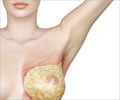
‘Tumors in different breast cancer patients may respond differently to the same treatment depending on which oncogenes are active and which are just along for the ride.’
Tweet it Now
"In order to move the field forward, we now need to be able to use oncogene signatures to tailor therapies using combinations of targeted drugs so that multiple driving oncogenes can be targeted at once," said Ethier. "Doing this successfully requires the identification of the oncogenes that the cancer cells are addicted to, as this allows the use of targeted drugs at very low doses. Low doses are essential if we are to use combinations of different targeted drugs." Ethier's group identified unique functional oncogene signatures in four different human breast cancer cell types. Using next-generation genome sequencing and genome silencing as each cancer cell type grew and multiplied, they assembled a list of genes for each cell type's functional oncogene signature - those genes that were copy number amplified or point mutated, and most essential to cancer cell survival. Although thousands of candidate oncogenes were screened during experimentation, only a handful made the list - fewer than 20 for each cell type.
The brevity of each list facilitated selection of the best oncogene for pharmaceutical targeting. Because lower doses of targeted drugs can be highly effective, side effects could be reduced. For example, Ethier's group found that targeting two or more members of a signature with much lower total drug concentrations in combination still killed cancer cells better than one higher-concentration drug alone.
Remarkably, a BCL2L1-targeted drug that worked in one cell line also then worked in a fifth breast cancer cell line with a similar oncogene signature containing BCL2L1, an oncogene not normally associated with breast cancer. This work demonstrates that one signature-targeting treatment can be extended to more than one cancer cell type. This means that patients with other types of cancer who have a similar functional oncogene signature might benefit from drugs that target BCL2L1, which are already in development.
Ethier thinks that oncogenes identified in a tumor biopsy might one day soon provide a rational and individualized approach to pharmaceutical treatment with targeted drug combinations. Meanwhile, these findings from his laboratory - showing the importance of considering a patient's functional oncogene signature before testing a new drug - could provide a rationale for redesigning clinical trials for breast cancer.
Advertisement














